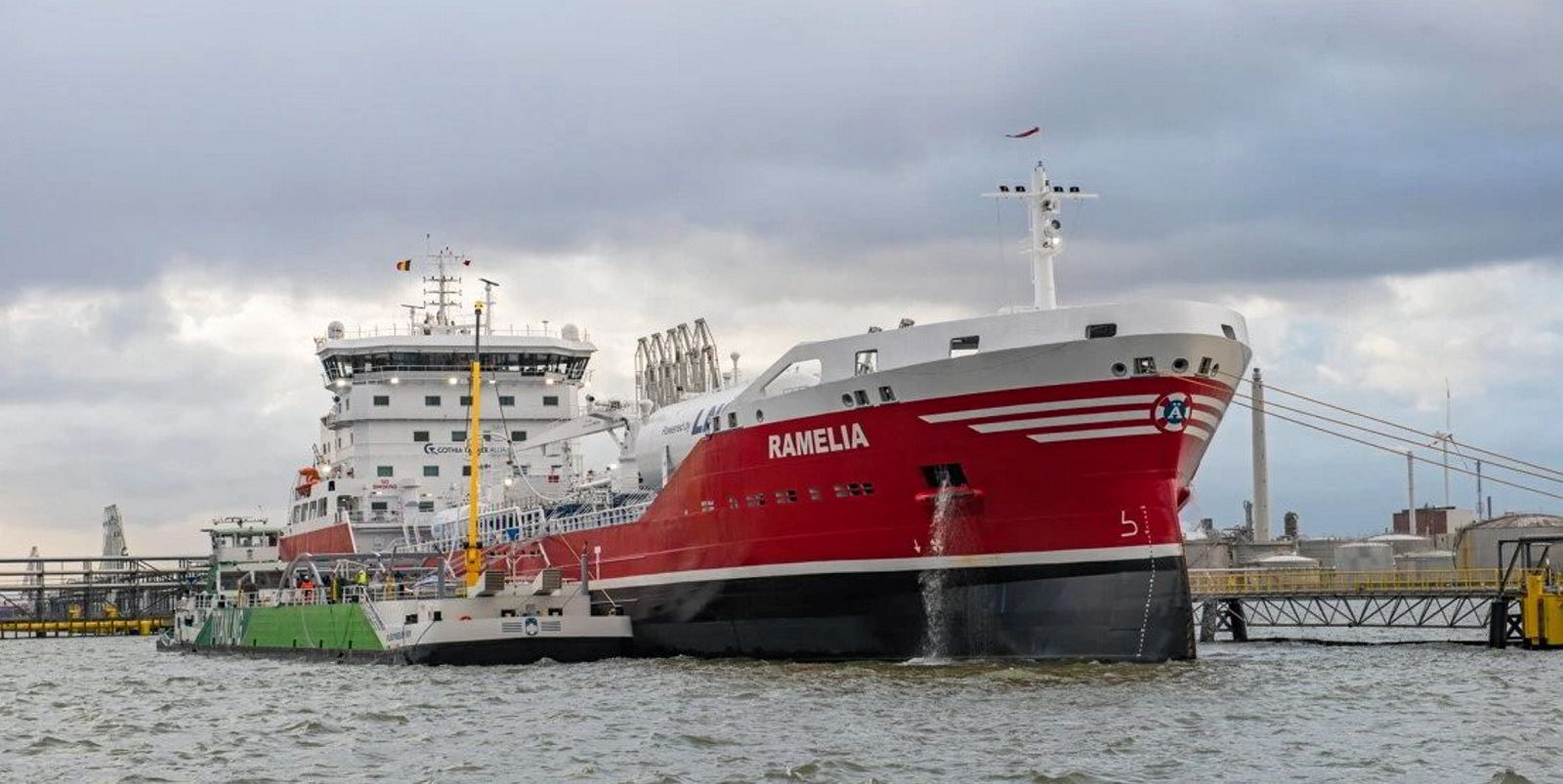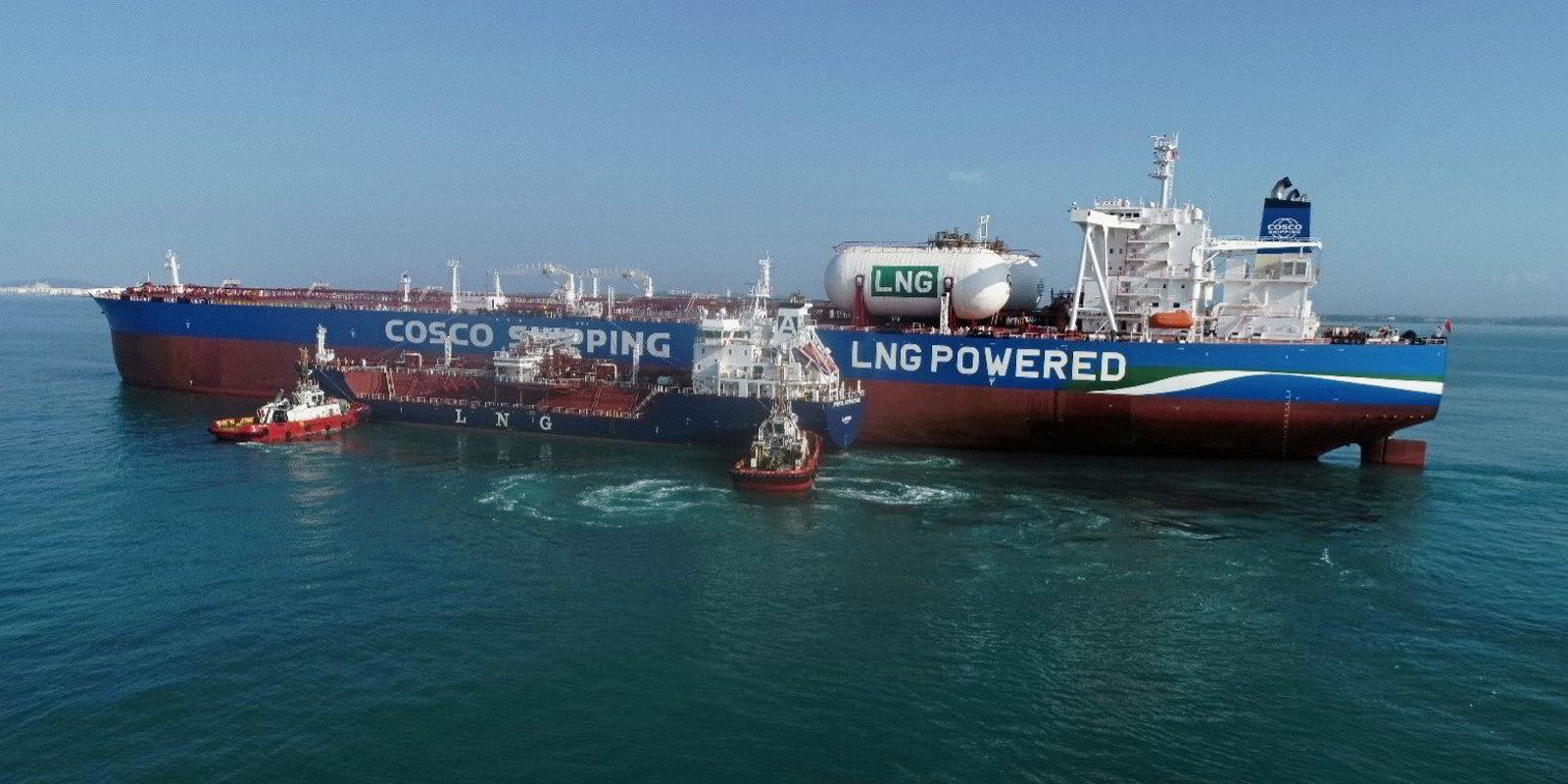Dutch bunker supplier Titan — formerly Titan LNG — is looking to move away from supplying fossil LNG to only delivering carbon-neutral fuels by the end of this decade.
Speaking to TradeWinds following the company’s announcement that it is losing the “LNG” from its original name, commercial director Michael Schaap said there is a good possibility that Titan will still supply conventional energy but that will be due to green variants not being sufficiently available.
“We have an ambition that by 2030 onwards at least, the vast majority of deliveries should be carbon-neutral fuels,” he said.
In a statement, Titan chief executive Niels den Nijs said: “Dropping the single product focus from our name reflects how we will use our expertise for other fuels that will emerge after LNG.
“Our extensive investment programme for the immediate and long-term future is 100% dedicated to carbon-neutral fuel infrastructure, such as LBM [liquefied bio-methane] production plants and LBM bunker vessels.”
Schaap admitted that Titan is being increasingly challenged on ‘grey’ or fossil LNG.
“We recognise that LNG by itself is not the final solution,” he said, adding that it is within Titan’s competency framework to look at other fuels.
Schaap said he is pleased that a “pathway” — whereby shipowners can transition from grey LNG to so-called bio and synthetic LNG — has now been illuminated for many.
But Titan is keen to lose the “LNG” tag to differentiate these carbon-neutral fuels, instead of referencing them as LBM and e-hydrogen-derived methane.
On LBM, Schaap hints at a big announcement that the company hopes to make later this year.
Titan has already announced a first LBM project which is building at Wilp in The Netherlands. This is due to launch in 2023 and will be aimed at the shipping market, although Schapp does not rule out making land-based deliveries from it too.
He said the shore-based business has been beneficial to the company, acting as a hedge on the marine market.
LNG bunker suppliers such as Titan have struggled for nearly to a year as gas prices shot up and shipowners with LNG dual-fuel vessels switched over to marine gas oil.
In the past few weeks, Schaap said customers had been returning as LNG pricing became more favourable. But gas prices have since “skyrocketed” on Russia’s announcement of cutbacks to gas deliveries to Europe via the Nord Stream pipeline and the loss of production at the Freeport LNG plant in the US.
“This market is not for the fainthearted,” he said. “This [price] spike has been enormous.”
Over time, Schaap expects LBM to become a more independent market and a separate commodity with its own pricing, which will disconnect from that of fossil LNG.
He admitted that e-methane will take longer to develop as it needs more renewable power than is currently available.

Titan operates two Flexfueler bunker barges — the 5,000-cbm LNG bunker vessel (LNGBV) Green Zeebrugge (built 2017) — and on average has at least one other LNGBV on charter.
Schaap said Titan is still ready to move on to ordering its planned larger LNG bunker barge — the 4,200 Krios — while plans for the larger 8,000-cbm LNGBV Hyperion also remain in place.
Despite the current gas price scares, he said there are still LNG supply tenders in the market and owners are looking longer term.
“We will be there to take some of that demand,” he said.





